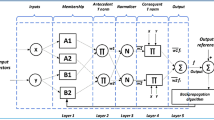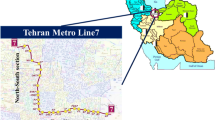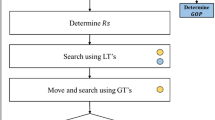Abstract
Prediction of tunnel boring machine (TBM) performance parameters can be caused to reduce the risks associated with tunneling projects. This study is aimed to introduce a new hybrid model namely Firefly algorithm (FA) combined by artificial neural network (ANN) for solving problems in the field of geotechnical engineering particularly for estimation of penetration rate (PR) of TBM. For this purpose, the results obtained from the field observations and laboratory tests were considered as model inputs to estimate PR of TBMs operated in a water transfer tunnel in Malaysia. Five rock mass and material properties (rock strength, tensile strength of rock, rock quality designation, rock mass rating and weathering zone) and two machine factors (trust force and revolution per minute) were used in the new model for predicting PA. FA algorithm was used to optimize weight and bias of ANN to obtain a higher level of accuracy. A series of hybrid FA-ANN models using the most influential parameters on FA were constructed to estimate PR. For comparison, a simple ANN model was built to predict PR of TBM. This ANN model was improved on the basis of new ways. By doing this, the best ANN model was chosen for comparison purposes. After implementing the best models for two methods, the data were divided into five separate categories. This will minimize the chance of randomness. Then the best models were applied for these new categories. The results demonstrated that new hybrid intelligent model is able to provide higher performance capacity for predicting. Based on the coefficient of determination 0.948 and 0.936 and 0.885 and 0.889 for training and testing datasets of FA-ANN and ANN models, respectively, it was found that the new hybrid model can be introduced as a superior model for solving geotechnical engineering problems.








Similar content being viewed by others
References
Roxborough FF, Phillips HR (1975) Rock excavation by disc cutter. In: International journal of rock mechanics and mining sciences and geomechanics abstracts. Elsevier, pp 361–366
Graham PC (1976) Rock exploration for machine manufacturers. Explor Rock Eng 173–180
Farmer IW, Glossop NH (1980) Mechanics of disc cutter penetration. Tunn Tunn 12:22–25
Snowdon RA, Ryley MD, Temporal J (1982) A study of disc cutting in selected British rocks. In: International journal of rock mechanics and mining sciences and geomechanics abstracts. Elsevier, pp 107–121
Bamford WE (1984) Rock test indices are being successfully correlated with tunnel boring machine performance. In: Fifth Australian tunnelling conference: state of the art in underground development and construction; preprints of papers. Institution of Engineers, Australia, p 218
Sato K, Gong F, Itakura K (1991) Prediction of disc cutter performance using a circular rock cutting ring. In: Proceedings 1st international mine mechanization and automation symposium
Rostami J, Ozdemir L (1993) A new model for performance prediction of hard rock TBMs. In: Proceedings of the rapid excavation and tunneling conference. Society for mining, metallogy and exploration, inc, p 793
Yagiz S (2002) Development of rock fracture and brittleness indices to quantify the effects of rock mass features and toughness in the CSM Model basic penetration for hard rock tunneling machines. Doctoral dissertation, Colorado School of Mines, Arthur Lakes Library
Yagiz S (2008) Utilizing rock mass properties for predicting TBM performance in hard rock condition. Tunn Undergr Sp Technol 23:326–339
Gong Q-M, Zhao J (2009) Development of a rock mass characteristics model for TBM penetration rate prediction. Int J Rock Mech Min Sci 46:8–18
Bruines P (1998) Neuro-fuzzy modeling of TBM performance with emphasis on the penetration rate. Mem Cent Eng Geol Netherlands, Delft 202
Yagiz S, Sezer EA, Gokceoglu C (2012) Artificial neural networks and nonlinear regression techniques to assess the influence of slake durability cycles on the prediction of uniaxial compressive strength and modulus of elasticity for carbonate rocks. Int J Numer Anal Meth Geomech 36(14):1636–1650
Jahed Armaghani D, Shoib RSNSBR, Faizi K, Rashid ASA (2017) Developing a hybrid PSO–ANN model for estimating the ultimate bearing capacity of rock-socketed piles. Neural Comput Appl. https://doi.org/10.1007/s00521-015-2072-z
Hasanipanah M, Noorian-Bidgoli M, Jahed Armaghani D, Khamesi H (2016) Feasibility of PSO-ANN model for predicting surface settlement caused by tunneling. Eng Comput. https://doi.org/10.1007/s00366-016-0447-0
Gordan B, Armaghani DJ, Adnan AB, Rashid ASA (2016) A new model for determining slope stability based on seismic motion performance. Soil Mech Found Eng 53:344–351. https://doi.org/10.1007/s11204-016-9409-1
Singh TN, Verma AK (2012) Comparative analysis of intelligent algorithms to correlate strength and petrographic properties of some schistose rocks. Eng Comput 28:1–12
Verma AK, Singh TN (2013) A neuro-fuzzy approach for prediction of longitudinal wave velocity. Neural Comput Appl 22:1685–1693
Koopialipoor M, Nikouei SS, Marto A et al (2018) Predicting tunnel boring machine performance through a new model based on the group method of data handling. Bull Eng Geol Environ 1–15
Hasanipanah M, Armaghani DJ, Amnieh HB, Koopialipoor M, Arab H (2018) A risk-based technique to analyze flyrock results through rock engineering system. Geotech Geol Eng 36:2247. https://doi.org/10.1007/s10706-018-0459-1
Ghaleini EN, Koopialipoor M, Momenzadeh M, Sarafraz ME, Mohamad ET, Gordan B (2018) A combination of artificial bee colony and neural network for approximating the safety factor of retaining walls. Eng Comput. https://doi.org/10.1007/s00366-018-0625-3
Mohammadhassani M, Saleh A, Suhatril M, Safa M (2015) Fuzzy modelling approach for shear strength prediction of RC deep beams. Smart Struct Syst 16:497–519
Mojtahedi SFF, Ebtehaj I, Hasanipanah M, Bonakdari H, Amnieh HB (2018) Proposing a novel hybrid intelligent model for the simulation of particle size distribution resulting from blasting. Eng Comput. https://doi.org/10.1007/s00366-018-0582-x
Hasanipanah M, Armaghani DJ, Amnieh HB et al (2017) Application of PSO to develop a powerful equation for prediction of flyrock due to blasting. Neural Comput Appl 28:1043–1050
Armaghani DJ, Hajihassani M, Sohaei H et al (2015) Neuro-fuzzy technique to predict air-overpressure induced by blasting. Arab J Geosci 8:10937–10950. https://doi.org/10.1007/s12517-015-1984-3
Moayedi H, Rezaei A (2017) An artificial neural network approach for under-reamed piles subjected to uplift forces in dry sand. Neural Comput Appl 1–10
Moayedi H, Hayati S (2018) Applicability of a CPT-based neural network solution in predicting load-settlement responses of bored pile. Int J Geomech 18:6018009
Mosallanezhad M, Moayedi H (2017) Developing hybrid artificial neural network model for predicting uplift resistance of screw piles. Arab J Geosci 10:479
Chahnasir ES, Zandi Y, Shariati M et al (2018) Application of support vector machine with firefly algorithm for investigation of the factors affecting the shear strength of angle shear connectors. SMART Struct Syst 22:413–424
Mansouri I, Safa M, Ibrahim Z et al (2016) Strength prediction of rotary brace damper using MLR and MARS. Struct Eng Mech 60:471–488
Ghasemi E, Yagiz S, Ataei M (2014) Predicting penetration rate of hard rock tunnel boring machine using fuzzy logic. Bull Eng Geol Environ 73:23–35
Mahdevari S, Shahriar K, Yagiz S, Shirazi MA (2014) A support vector regression model for predicting tunnel boring machine penetration rates. Int J Rock Mech Min Sci 72:214–229
Yagiz S, Karahan H (2011) Prediction of hard rock TBM penetration rate using particle swarm optimization. Int J Rock Mech Min Sci 48:427–433
Yagiz S, Gokceoglu C, Sezer E, Iplikci S (2009) Application of two non-linear prediction tools to the estimation of tunnel boring machine performance. Eng Appl Artif Intell 22:808–814
Benardos AG, Kaliampakos DC (2004) Modelling TBM performance with artificial neural networks. Tunn Undergr Sp Technol 19:597–605
Grima MA, Bruines PA, Verhoef PNW (2000) Modeling tunnel boring machine performance by neuro-fuzzy methods. Tunn Undergr Sp Technol 15:259–269
Armaghani DJ, Mohamad ET, Narayanasamy MS et al (2017) Development of hybrid intelligent models for predicting TBM penetration rate in hard rock condition. Tunn Undergr Sp Technol 63:29–43. https://doi.org/10.1016/j.tust.2016.12.009
Salimi A, Rostami J, Moormann C, Delisio A (2016) Application of non-linear regression analysis and artificial intelligence algorithms for performance prediction of hard rock TBMs. Tunn Undergr Sp Technol 58:236–246
Fattahi H (2016) Adaptive neuro fuzzy inference system based on fuzzy c–means clustering algorithm, a technique for estimation of tbm penetration rate. Iran Univ Sci Technol 6:159–171
Minh VT, Katushin D, Antonov M, Veinthal R (2017) Regression models and fuzzy logic prediction of TBM penetration rate. Open Eng 7:60–68
Yang X-S (2010) Firefly algorithm, Levy flights and global optimization. In: Research and development in intelligent systems XXVI. Springer, Berlin, pp 209–218
Talbi E-G (2009) Metaheuristics: from design to implementation. Wiley, New York
Koopialipoor M, Ghaleini EN, Haghighi M et al (2018) Overbreak prediction and optimization in tunnel using neural network and bee colony techniques. Eng Comput 1–12
Yang X-S (2009) Firefly algorithms for multimodal optimization. In: International symposium on stochastic algorithms. Springer, Berlin, pp 169–178
McCulloch WS, Pitts W (1943) A logical calculus of the ideas immanent in nervous activity. Bull Math Biophys 5:115–133
Simpson PK (1990) Artificial neural systems. Pergamon
Mansouri I, Shariati M, Safa M, Ibrahim Z, Tahir MM, Petković D (2017) Analysis of influential factors for predicting the shear strength of a V-shaped angle shear connector in composite beams using an adaptive neuro-fuzzy technique. J Intell Manuf. https://doi.org/10.1007/s10845-017-1306-6
Toghroli A, Mohammadhassani M, Suhatril M et al (2014) Prediction of shear capacity of channel shear connectors using the ANFIS model. Steel Compos Struct 17:623–639
Toghroli A, Darvishmoghaddam E, Zandi Y et al (2018) Evaluation of the parameters affecting the Schmidt rebound hammer reading using ANFIS method. Comput Concr 21:525–530
Garrett JH (1994) Where and why artificial neural networks are applicable in civil engineering. J Comput Civil Eng 8:129–130
Koopialipoor M, Armaghani DJ, Hedayat A et al (2018) Applying various hybrid intelligent systems to evaluate and predict slope stability under static and dynamic conditions. Soft Comput. https://doi.org/10.1007/s00500-018-3253-3
Dreyfus G (2005) Neural networks: methodology and applications. Springer, Berlin
Koopialipoor M, Armaghani DJ, Haghighi M, Ghaleini EN (2017) A neuro-genetic predictive model to approximate overbreak induced by drilling and blasting operation in tunnels. Bull Eng Geol Environ. https://doi.org/10.1007/s10064-017-1116-2
Gordan B, Koopialipoor M, Clementking A, Tootoonchi H, Mohamad ET (2018) Estimating and optimizing safety factors of retaining wall through neural network and bee colony techniques. Eng Comput. https://doi.org/10.1007/s00366-018-0642-2
Mohammadhassani M, Nezamabadi-Pour H, Suhatril M, Shariati M (2014) An evolutionary fuzzy modelling approach and comparison of different methods for shear strength prediction of high-strength concrete beams without stirrups. Smart Struct Syst Int J 14:785–809
Toghroli A, Suhatril M, Ibrahim Z et al (2016) Potential of soft computing approach for evaluating the factors affecting the capacity of steel–concrete composite beam. J Intell Manuf 29:1793–1801
Sedghi Y, Zandi Y, Toghroli A, Safa M, Mohamad ET, Khorami M, Wakil A (2018) Application of ANFIS technique on performance of C and L shaped angle shear connectors. SMART Struct Syst 22:335–340. https://doi.org/10.12989/sss.2018.22.3.335
Yang X-S (2010) Firefly algorithm, stochastic test functions and design optimisation. Int J Bio-Inspired Comput 2:78–84
Kwiecień J, Filipowicz B (2012) Firefly algorithm in optimization of queueing systems. Bull Polish Acad Sci Tech Sci 60:363–368
Alweshah M (2014) Firefly algorithm with artificial neural network for time series problems. Res J Appl Sci Eng Technol 7:3978–3982
Balachennaiah P, Suryakalavathi M, Nagendra P (2016) Optimizing real power loss and voltage stability limit of a large transmission network using firefly algorithm. Eng Sci Technol an Int J 19:800–810
Long NC, Meesad P, Unger H (2015) A highly accurate firefly based algorithm for heart disease prediction. Expert Syst Appl 42:8221–8231
Rajan A, Malakar T (2015) Optimal reactive power dispatch using hybrid Nelder–Mead simplex based firefly algorithm. Int J Electr Power Energy Syst 66:9–24
Sundaram NM, Rafek AG, Komoo I (1998) The influence of rock mass properties in the assessment of TBM performance. In: Proceedings of the 8th IAEG Congress, Vancouver, British Columbia, Canada. pp 3553–3559
Shijing W, Bo Q, Zhibo G (2006) The time and cost prediction of tunnel boring machine in tunnelling. Wuhan Univ J Nat Sci 11(2):385–388
Sundaram M (2007) The effects of ground conditions on TBM performance in tunnel excavation—a case history
Sapigni M, Berti M, Bethaz E et al (2002) TBM performance estimation using rock mass classifications. Int J Rock Mech Min Sci 39:771–788
Farrokh E, Rostami J, Laughton C (2012) Study of various models for estimation of penetration rate of hard rock TBMs. Tunn Undergr Sp Technol 30:110–123
Ulusay R, Hudson JAISRM (2007) The complete ISRM suggested methods for rock characterization, testing and monitoring: 1974–2006. Comm Test methods Int Soc Rock Mech Compil arranged by ISRM Turkish Natl Group, Ankara, Turkey 628
Esmaeili M, Osanloo M, Rashidinejad F et al (2014) Multiple regression, ANN and ANFIS models for prediction of backbreak in the open pit blasting. Eng Comput 30:549–558
Koopialipoor M, Fallah A, Armaghani DJ et al (2018) Three hybrid intelligent models in estimating flyrock distance resulting from blasting. Eng Comput. https://doi.org/10.1007/s00366-018-0596-4
Ebrahimi E, Monjezi M, Khalesi MR, Armaghani DJ (2016) Prediction and optimization of back-break and rock fragmentation using an artificial neural network and a bee colony algorithm. Bull Eng Geol Environ 75:27–36
Zorlu K, Gokceoglu C, Ocakoglu F et al (2008) Prediction of uniaxial compressive strength of sandstones using petrography-based models. Eng Geol 96:141–158
Armaghani DJ, Hajihassani M, Mohamad ET et al (2014) Blasting-induced flyrock and ground vibration prediction through an expert artificial neural network based on particle swarm optimization. Arab J Geosci 7:5383–5396
Hajihassani M, Jahed Armaghani D, Monjezi M et al (2015) Blast-induced air and ground vibration prediction: a particle swarm optimization-based artificial neural network approach. Environ Earth Sci 74:2799–2817. https://doi.org/10.1007/s12665-015-4274-1
Author information
Authors and Affiliations
Corresponding author
Additional information
Publisher’s Note
Springer Nature remains neutral with regard to jurisdictional claims in published maps and institutional affiliations.
Rights and permissions
About this article
Cite this article
Koopialipoor, M., Fahimifar, A., Ghaleini, E.N. et al. Development of a new hybrid ANN for solving a geotechnical problem related to tunnel boring machine performance. Engineering with Computers 36, 345–357 (2020). https://doi.org/10.1007/s00366-019-00701-8
Received:
Accepted:
Published:
Issue Date:
DOI: https://doi.org/10.1007/s00366-019-00701-8




